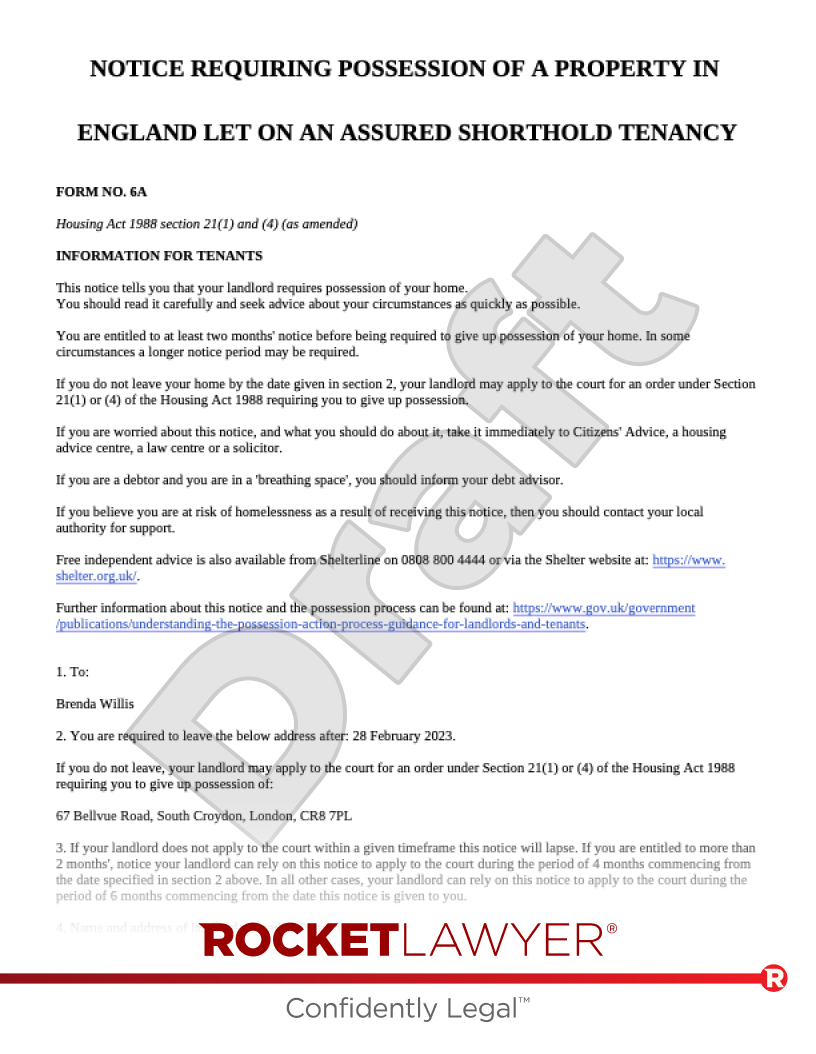What is a periodic tenancy?
A periodic tenancy, also known as a ‘rolling tenancy’ (because it rolls from one period to the next), is a tenancy with no fixed end date. Instead, the tenancy runs from payment period to payment period (eg if rent is paid monthly, the tenancy rolls from month to month; if rent is paid weekly, the tenancy rolls from week to week). Periodic tenancies can either be contractual, statutory or created from the start.
A contractual periodic tenancy will arise if the last agreement was either a:
-
rolling tenancy contract with no end date
-
fixed-term tenancy with a clause saying it would become a periodic contract when the fixed term ended
A statutory periodic tenancy will arise if:
-
the previous tenancy agreement had a fixed term
-
the end date has passed but the tenant still lives there
-
the agreement didn’t say that it would become a periodic contract at the end of the fixed term
-
the landlord accepts the tenant’s rent payments
A period tenancy will be created from the start if, rather than giving the tenant a fixed term (ie for six months or a year), the tenant is given an initial term of just one month (or even just one week) and the tenancy continues to run on after that initial fixed term. The tenancy will automatically turn into a periodic tenancy.
How can a tenant end a rolling tenancy?
Tenants on a rolling tenancy can issue a notice to quit or have an agreement with the terms agreed between themselves and the landlord. The second option is more flexible and the tenant won’t need to give legal notice to the landlord, however, the tenant and landlords should confirm their agreement in writing.
What is a notice to quit?
A notice to quit is a document from the tenant to the landlord notifying them that they are leaving the rented premises.
A notice to quit must be in writing and provide:
-
the right amount of notice, setting out the date the notice period ends
-
the address of the premises
-
the tenant's name and address
-
the landlord's name and address
-
information on security deposits (including a forwarding address for the landlord to return the tenancy deposit), key drop-offs and property inspections
Notice periods
The parties must give the correct date for when the notice period ends as the notice to quit won't be valid otherwise. Tenants should check their tenancy agreement - if it sets out the amount of notice the parties must give, tenants should follow what the agreement says.
If the most recent tenancy agreement doesn't set out a notice period, the tenant must give the landlord at least:
-
1 month’s notice if their rent is due monthly
-
4 weeks’ notice if their rent is due weekly
Tenants may need to give more than the minimum notice to make sure the tenancy ends on the right day.
The end date of the tenancy must be either the first or last day of the rental period. For example, if a rolling tenancy runs from the first to the last day of the month, the tenant would have to give notice to the landlord on or before the first day of the month to end on the last day of the month. In other words, notice would have to be given on or before 1 March for the tenancy to end on 31 March.
If the tenant wants to leave earlier, then the landlord can agree to accept shorter notice. If the landlord agrees, it is important to have the agreed date recorded in writing.
Sending the notice
Notice should either be sent to the landlord or the landlord’s agent. Tenants should check their most recent agreement to see if it says where to send the notice.
Tenants should post or hand-deliver their notice unless:
-
their contract allows them to use email or text
-
their landlord agrees to accept notice by email
Ask a lawyer if you have any questions about ending your periodic tenancy.
How can a landlord end a periodic tenancy?
A landlord can usually use a Section 21 notice to end a periodic tenancy. A section 21 notice is commonly referred to as a ‘no-fault eviction’, as the landlord does not typically need a legal reason to want to evict the tenants.
For statutory periodic tenancies, the section 21 notice period will usually be 2 months (or more if the landlord wishes).
For contractual periodic tenancies, notice periods are usually the same as for statutory periodic tenancies. However, if rent is paid quarterly or 6-monthly, the notice period must either be 3 months or 6 months, respectively.
For more information on section 21 notices, read Repossessing property - section 21 notices. Ask a lawyer if you have any questions about evicting a tenant on a periodic tenancy.




